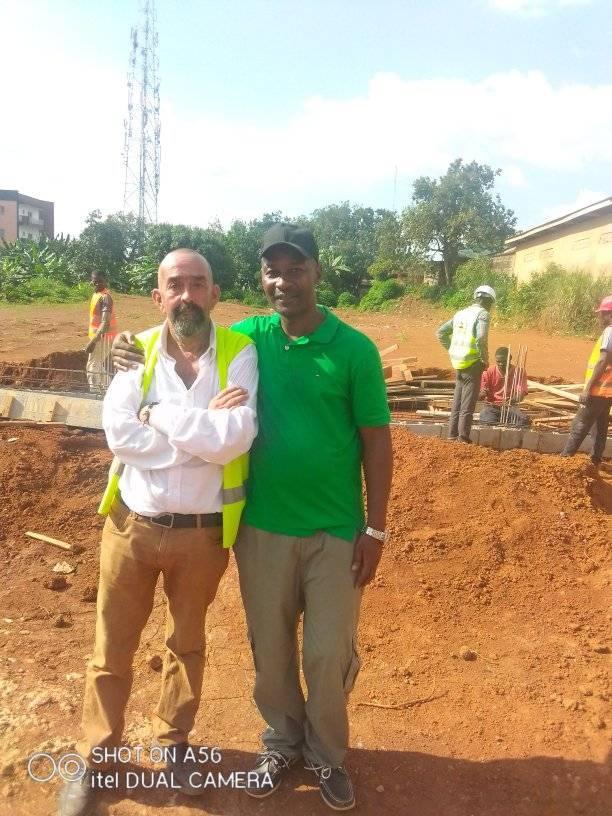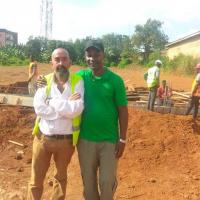- Accueil
- Blog
Blog
Etapes clés de la conception d'un site web
Le 28/02/2023
(Français) Quelles sont les étapes clés de la conception d'un site web?
Startups, petites et moyennes entreprises (PME)
Associations et organismes à buts non lucratifs (OBNL)

La création d’un site Internet est encore envisagée comme un processus rapide, sans grand enjeu et à portée de tous. En atteste l’offre pléthorique de solutions « clé en main », qui ne tiennent pas compte de la réalité de votre organisation et de son potentiel de croissance grâce au numérique. Il s’agit là d’une erreur stratégique coûteuse. L’agence mbiance se base sur une vision plus adaptée aux réalités actuelles :
Vos clients, qu’ils soient B2B ou B2C (d’autres entreprises ou des consommateurs), s’attendent à pouvoir aller aussi loin que possible par l’intermédiaire de votre plateforme Web, dans le processus d’acquisition ou l’expérience de vos produits, services ou activités.
Votre position concurrentielle dépend de la maximisation de ce que vous pouvez offrir via le Web, et cela peut prendre plusieurs formes : abonnements, forfaits, essais virtuels, visites ou rencontres virtuelles, vidéos, tutoriels, catalogue interactif, boutique en ligne, etc. Ce qui est certain, c’est que seule une solution sur mesure peut exploiter pleinement le potentiel unique de votre PME, start-up ou organisation, et de capitaliser sur vos éléments différentiateurs.

Un site Web (ou une application mobile) se doit d’être un outil rentable, contribuant à augmenter vos ventes, optimiser la qualité de vos services et vous démarquer de la concurrence. Ainsi, chaque conception de site Web professionnel doit être gérée comme un projet à part entière, impliquant une écoute attentive de chaque client, une méthodologie rigoureuse, précise et organisée, dans le respect des contraintes budgétaires et des échéances.
Un Site Web et/ou application mobile doit non seulement pouvoir évoluer au fil des ans, mais également être durable et ne pas se résumer à des outils digitaux obsolètes après 3 ou 4 ans d’exploitation. Il doit pouvoir durer plus de 10 ans.
Ainsi, pour une création Web efficace, garantissant un résultat à hauteur des enjeux tant technologiques que concurrentiels, il s’agit de respecter un certain nombre d’étapes.
Étape #1 : Réflexion stratégique et définition du projet
Tout projet de conception Web doit débuter par une réflexion stratégique quant à sa contribution espérée/planifiée à l’accroissement de ses affaires. Il s’agit de définir :
Ses objectifs – pourquoi créer un site Internet ? Augmenter ses ventes ? Gagner en visibilité ? Se démarquer de la concurrence ? Quantifiez vos cibles!
Son identité – institutionnelle, sectorielle, visuelle.
Son modèle économique – s’agira-t-il d’un site marchand ? Sinon, comment générera-t-il des revenus ?
Ses cibles – BtoB, BtoC, secteur public, secteur associatif, public féminin ou masculin, classe d’âge…
Ses exigences en termes de délais et de budget – le site Web doit-il être mis en ligne rapidement ? Quel est le budget disponible pour sa création, sa mise en ligne, son référencement, sa maintenance ? N’oubliez pas d’impliquer votre comptable au besoin, puisqu’il s’agit d’un investissement!
Cette étape doit idéalement être réalisée en interne, par le client lui-même. Personne n’est mieux placé que votre organisation pour connaître vos clients, vos objectifs d'affaires et votre potentiel numérique. Une agence Web compétente vous conseillera au besoin dans votre réflexion et planification, ou mieux elle enrichira celle-ci grâce à son expertise, sans toutefois se substituer à votre expertise dans votre domaine d’activité ni à votre responsabilité de définir vos objectifs stratégiques.
Ne laissez pas une agence prendre en charge votre stratégie d’affaires à votre place. Cela conduit presque toujours à des investissements coûteux se révélant inadaptés à votre réalité et pouvant nuire à votre croissance. Ne vous privez donc pas d’une réflexion minimale à l’interne sur votre plan stratégique numérique.
Une fois votre réflexion faite, définissez minimalement votre projet, afin que l’agence Web qui travaillera pour donner vie à projet puisse comprendre son envergure afin de vous préparer une proposition adéquate; il s’agit ici de rédiger une courte liste dans Word, en n’utilisant que des listes à puces de préférence, et qui se concentre à lister les grandes fonctionnalités de votre projet, pour chacun des publics ciblés. Au besoin une agence Web pourra vous prêter assistance sur ce point!
Étape #2 : Choix du concepteur Web
Vient ensuite le choix de l’exécution, autrement dit la réponse à la simple question « Qui va créer le site Web ? ». Il existe différentes alternatives :
Créer soi-même son site (en ayant par exemple recours à un CMS Open Source comme WordPress)
Engager un développeur freelance
Confier la conception à une agence Web reconnue et d’expérience
Ce choix comporte de nombreuses implications en termes de coûts, de délais, de compétences, de flexibilité, de garantie de résultat , de durée de vie du produit réalisé, et de rentabilité à moyen et long termes.
À cet égard, nous vous invitons à consulter nos billets sur notre blogue, qui traitent plus amplement de la création de sites Web :
5 questions essentielles à se poser avant de créer son site professionnel
Confier la conception et la création de votre site à une agence Web
Les 10 critères pour bien choisir son agence Web
Étape #3 : Cahier des charges
Le cahier des charges est le document qui décrit en détail le projet et ses enjeux. Ainsi il mentionne avec précision :
L’ensemble des choix techniques et graphiques (design Web, CMS, sur mesure)
L’architecture du site (arborescence, rubriques)
Les outils, conditions et étapes de développement
Les fonctionnalités à mettre en place (paiement en ligne, jeux interactifs, membership numérique…)
Les éléments qu’il faudra paramétriser, pour que le client puisse faire évoluer son site sans avoir besoin de solliciter l’agence Web
Le type d’hébergement (mutualisé, dédié, VPS ou Cloud), le nom de domaine
Le tout dans le respect d’un calendrier détaillé.
Le cahier des charges doit être clair et précis, afin que la création Web se déroule sous les meilleurs auspices, sans perte d’argent due à de mauvaises interprétations ou des frictions dues à une gestion des attentes déficiente. En effet, il constitue une sorte de directive, à laquelle l’équipe de création (et le client) se réfèrent tout au long du processus de conception Web.
Étape #4 : Développement et conception graphique
Il s’agit en fait de deux étapes, indissociables l’une de l’autre.
La conception graphique consiste à créer une identité visuelle (charte graphique) en adéquation avec l’identité de la marque ou l’entreprise, en tenant compte des tendances du Web, des codes du secteur d’activité et des exigences implicites des internautes. Elle est le travail d’un graphiste, qui met au point un certain nombre de maquettes graphiques. Ces maquettes sont ensuite transmises à un intégrateur, pour l’intégration Web.
L’intégration et la programmation Web, ou « développement », englobe la mise en place de tous les éléments nécessaires à la création du site Web : CMS, puis transformation des maquettes graphiques en pages web. Ce travail exige des aptitudes en programmation CSS, javascript, et autres langages comme php, au besoin.
C’est également lors de cette étape que le développeur travaillera sur la compatibilité du site Web avec différents terminaux (smartphones, tablettes). On parle alors de responsive Web design. Enfin, la phase de développement englobe l’interaction possible avec une base de données, indispensable dans le cas d’une boutique en ligne et, plus généralement, d’un site Web avec connexion à un compte ou tout simplement d’un site Web dont le contenu est entièrement sous le contrôle du client, comme c’est attendu en 2021.
Étape #5 : Optimisation SEO
Cette étape est cruciale au succès du site Web, car elle déterminera sa visibilité sur les pages de résultats des différents moteurs de recherche (Google, Bing, Yahoo). Les sites Web parfaitement optimisés sont ceux dont le SERP leur garantit un trafic dense. Aussi, le contenu éditorial doit détenir un certain nombre de mots-clés, et être enrichi régulièrement et de façon constante, pour assurer au site Internet un référencement naturel performant.
Etape #6 : Mise en ligne, suivi et maintenance
Une fois les précédentes étapes de conception Web validées, le client peut donner son feu vert pour une mise en ligne de son site Internet. Juste avant, le webmestre peut être amené à terminer quelques configurations techniques, voire former le client sur certaines fonctionnalités utiles, telles que l’administration du contenu de son site ou le suivi statistique de sa vitrine virtuelle (trafic entrant, pages visitées, durée de session, taux de rebond…).
Enfin, l’agence Web peut, selon l’accord avec le client, gérer les mises à jour, sauvegardes régulières, assistance technique et maintenance du site (si le site en requiert, comme WordPress). Une offre de services cruciale, car il est rare de disposer du temps et/ou des compétences suffisantes pour prendre en charge ces aspects techniques dans le but de garder un site web optimisé en tout temps.
(English) What are the key steps in designing a website? Startups, small and medium-sized enterprises (SMEs) Associations and non-profit organizations (NPOs) Website design Digital strategy Project management Creating a website is still seen as a quick process, without major challenges and within everyone's reach. Evidenced by the plethora of “turnkey” solutions, which do not take into account the reality of your organization and its growth potential thanks to digital technology. This is a costly strategic mistake. The mbiance agency is based on a vision more suited to current realities: Your customers, whether they are B2B or B2C (other businesses or consumers), expect to be able to go as far as possible through your web platform, in the acquisition process or the customer experience. your products, services or activities. Your competitive position depends on maximizing what you can offer via the Web, and this can take several forms: subscriptions, packages, virtual trials, virtual visits or meetings, videos, tutorials, interactive catalog, online store, etc. What is certain is that only a tailor-made solution can fully exploit the unique potential of your SME, start-up or organization, and capitalize on your differentiating elements. Key steps in designing a website A website (or a mobile application) must be a profitable tool, helping to increase your sales, optimize the quality of your services and set you apart from the competition. Thus, each professional website design must be managed as a project in its own right, involving attentive listening to each client, a rigorous, precise and organized methodology, while respecting budgetary constraints and deadlines. A Website and/or mobile application must not only be able to evolve over the years, but also be sustainable and not be reduced to obsolete digital tools after 3 or 4 years of operation. It should be able to last more than 10 years.
Thus, for an effective Web creation, guaranteeing a result that meets both technological and competitive challenges, it is a question of respecting a certain number of steps. Strategic thinking and project definition
Step #1: Strategic thinking and definition of the project Any web design project must begin with a strategic reflection on its hoped/planned contribution to the growth of its business. This is to define: Its objectives – why create a website? Increase your sales? Gain visibility? Stand out from competition ? Quantify your targets! Its identity – institutional, sectoral, visual. Its business model – will it be a commercial site? If not, how will it generate revenue? Its targets – BtoB, BtoC, public sector, associative sector, female or male public, age group… Their time and budget requirements – does the website need to go live quickly? What is the budget available for its creation, its online publication, its referencing, its maintenance? Don't forget to involve your accountant if necessary, since this is an investment! This step should ideally be carried out internally, by the client himself. No one is better placed than your organization to know your customers, your business objectives and your digital potential. A competent web agency will advise you as needed in your reflection and planning, or better it will enrich it thanks to its expertise, without however replacing your expertise in your field of activity or your responsibility to define your strategic objectives. Don't let an agency take care of your business strategy for you. This almost always leads to costly investments that turn out to be unsuited to your reality and can harm your growth. Do not deprive yourself of a minimum internal reflection on your digital strategic plan.
Once you have thought about it, define your project minimally, so that the web agency that will work to bring the project to life can understand its scope in order to prepare an adequate proposal for you; this is about writing a short list in Word, using only bulleted lists preferably, and focusing on listing the main features of your project, for each of the target audiences. If necessary, a web agency can help you on this point!
Step #2: Choosing the Web Designer Then comes the choice of execution, in other words the answer to the simple question "Who will create the website?" ". There are different alternatives: Create your own site (for example by using an Open Source CMS like WordPress) Hire a freelance developer Entrust the design to a recognized and experienced Web agency This choice has many implications in terms of costs, deadlines, skills, flexibility, guaranteed results, lifespan of the product produced, and medium and long-term profitability. In this regard, we invite you to consult our posts on our blog, which deal more fully with the creation of websites: 5 essential questions to ask yourself before creating your professional website Entrust the design and creation of your site to a web agency The 10 criteria for choosing the right web agency
Step #3: Specifications The specifications are the document that describes in detail the project and its challenges. Thus he specifically mentions: All the technical and graphic choices (Web design, CMS, custom) The architecture of the site (tree structure, headings) Development tools, conditions and stages The functionalities to be implemented (online payment, interactive games, digital membership, etc.) The elements that will need to be configured, so that the client can develop his site without having to contact the web agency The type of hosting (shared, dedicated, VPS or Cloud), the domain name All in accordance with a detailed schedule.
The specifications must be clear and precise, so that the web creation proceeds under the best auspices, without loss of money due to misinterpretations or friction due to deficient management of expectations. Indeed, it constitutes a kind of guideline, to which the creative team (and the client) refer throughout the web design process.
Step #4: Development and graphic design It is actually two steps, inseparable from each other. Graphic design consists of creating a visual identity (graphic charter) in line with the identity of the brand or the company, taking into account web trends, industry codes and the implicit requirements of Internet users. It is the work of a graphic designer, who develops a number of graphic models. These models are then sent to an integrator, for Web integration. Web integration and programming, or “development”, encompasses the implementation of all the elements necessary for the creation of the website: CMS, then transformation of the graphic models into web pages. This work requires skills in programming CSS, javascript, and other languages such as php, as needed. It is also during this stage that the developer will work on the compatibility of the website with different terminals (smartphones, tablets). We then speak of responsive web design. Finally, the development phase encompasses the possible interaction with a database, essential in the case of an online store and, more generally, of a website with connection to an account or simply a website. whose content is entirely under the control of the customer, as is expected in 2021.
Step #5: SEO Optimization This step is crucial to the success of the website, because it will determine its visibility on the results pages of the various search engines (Google, Bing, Yahoo). Perfectly optimized websites are those whose SERP guarantees them heavy traffic. Also, the editorial content must hold a certain number of keywords, and be regularly and constantly enriched, to ensure that the website has a high-performance natural referencing.
Step #6: Going online, monitoring and maintenance Once the previous stages of Web design have been validated, the client can give the green light to put their website online. Just before, the webmaster may be required to complete some technical configurations, or even train the client on certain useful features, such as the administration of the content of his site or the statistical monitoring of his virtual storefront (incoming traffic, pages visited, duration of session, bounce rate, etc.). Finally, the web agency can, according to the agreement with the client, manage updates, regular backups, technical assistance and maintenance of the site (if the site requires it, such as WordPress). A crucial service offer, because it is rare to have enough time and/or skills to take care of these technical aspects in order to keep a website optimized at all times.
(Deutsch) Was sind die wichtigsten Schritte bei der Gestaltung einer Website? Startups, kleine und mittlere Unternehmen (KMU) Verbände und Non-Profit-Organisationen (NPOs) Website-Design Digitale Strategie Projektmanagement Das Erstellen einer Website gilt immer noch als schneller Prozess, ohne große Herausforderungen und für jedermann erreichbar. Belegt durch die Fülle von „schlüsselfertigen“ Lösungen, die die Realität Ihrer Organisation und ihr Wachstumspotenzial dank digitaler Technologie nicht berücksichtigen. Dies ist ein kostspieliger strategischer Fehler. Die Agentur mbiance basiert auf einer Vision, die der aktuellen Realität besser entspricht: Ihre Kunden, ob B2B oder B2C (andere Unternehmen oder Verbraucher), erwarten, dass sie über Ihre Webplattform, im Akquiseprozess oder im Kundenerlebnis so weit wie möglich zu Ihren Produkten, Dienstleistungen oder Aktivitäten gelangen können. Ihre Wettbewerbsposition hängt davon ab, was Sie über das Web anbieten können, und dies kann verschiedene Formen annehmen: Abonnements, Pakete, virtuelle Tests, virtuelle Besuche oder Treffen, Videos, Tutorials, interaktiver Katalog, Online-Shop usw. Sicher ist, dass nur eine maßgeschneiderte Lösung das einzigartige Potenzial Ihres KMU, Start-ups oder Ihrer Organisation voll ausschöpfen und Ihre Differenzierungsmerkmale nutzen kann. Wichtige Schritte beim Entwerfen einer Website Eine Website (oder eine mobile Anwendung) muss ein profitables Tool sein, das hilft, Ihren Umsatz zu steigern, die Qualität Ihrer Dienstleistungen zu optimieren und Sie von der Konkurrenz abzuheben. Daher muss jedes professionelle Website-Design als eigenständiges Projekt verwaltet werden, das aufmerksames Zuhören für jeden Kunden, eine strenge, präzise und organisierte Methodik sowie die Einhaltung von Budgetbeschränkungen und Fristen beinhaltet. Eine Website und/oder mobile Anwendung muss sich nicht nur über die Jahre weiterentwickeln können, sondern auch nachhaltig sein und nicht nach 3 oder 4 Jahren Betrieb auf veraltete digitale Tools reduziert werden. Es sollte mehr als 10 Jahre halten können.
Für eine effektive Web-Erstellung, die ein Ergebnis garantiert, das sowohl den technologischen als auch den wettbewerblichen Herausforderungen gerecht wird, ist es also eine Frage der Einhaltung einer bestimmten Anzahl von Schritten. Strategisches Denken und Projektdefinition
Schritt Nr. 1: Strategisches Denken und Definition des Projekts Jedes Webdesign-Projekt muss mit einer strategischen Reflexion über seinen erhofften/geplanten Beitrag zum Wachstum seines Unternehmens beginnen. Damit ist zu definieren: Seine Ziele – warum eine Website erstellen? Ihren Umsatz steigern? Sichtbarkeit gewinnen? Sich von der Konkurrenz abheben? Quantifizieren Sie Ihre Ziele! Seine Identität – institutionell, sektoral, visuell. Sein Geschäftsmodell – wird es eine kommerzielle Website sein? Wenn nicht, wie wird es Einnahmen generieren? Seine Zielgruppen – BtoB, BtoC, öffentlicher Sektor, assoziativer Sektor, weibliche oder männliche Öffentlichkeit, Altersgruppe… Ihr Zeit- und Budgetbedarf – soll die Website schnell live gehen? Welches Budget steht für seine Erstellung, seine Online-Veröffentlichung, seine Referenzierung, seine Pflege zur Verfügung? Vergessen Sie nicht, ggf. Ihren Buchhalter hinzuzuziehen, denn es handelt sich um eine Investition! Dieser Schritt sollte idealerweise intern durch den Kunden selbst durchgeführt werden. Niemand ist besser in der Lage als Ihr Unternehmen, Ihre Kunden, Ihre Geschäftsziele und Ihr digitales Potenzial zu kennen. Eine kompetente Webagentur berät Sie bei Bedarf in Ihrer Reflexion und Planung oder bereichert diese durch ihre Expertise, ohne jedoch Ihre Expertise in Ihrem Tätigkeitsfeld oder Ihre Verantwortung für die Definition Ihrer strategischen Ziele zu ersetzen. Lassen Sie sich nicht von einer Agentur um Ihre Geschäftsstrategie kümmern. Dies führt fast immer zu kostspieligen Investitionen, die sich als unpassend für Ihre Realität herausstellen und Ihrem Wachstum schaden können. Verzichten Sie nicht auf eine minimale interne Reflexion über Ihren digitalen Strategieplan.
Sobald Ihre Überlegungen abgeschlossen sind, definieren Sie Ihr Projekt minimal, damit die Webagentur, die daran arbeiten wird, das Projekt zum Leben zu erwecken, seinen Umfang verstehen kann, um einen angemessenen Vorschlag für Sie vorzubereiten. Hier geht es darum, eine kurze Liste in Word zu schreiben, vorzugsweise nur Listen mit Aufzählungszeichen zu verwenden und sich darauf zu konzentrieren, die Hauptmerkmale Ihres Projekts für jede der Zielgruppen aufzulisten. Gegebenenfalls kann Ihnen in diesem Punkt eine Webagentur weiterhelfen!
Schritt Nr. 2: Auswahl des Webdesigners Dann kommt die Wahl der Ausführung, also die Antwort auf die einfache Frage „Wer erstellt die Website?“. ". Es gibt verschiedene Alternativen: Erstellen Sie Ihre eigene Website (z. B. mit einem Open-Source-CMS wie WordPress) Stellen Sie einen freiberuflichen Entwickler ein Vertrauen Sie das Design einer anerkannten und erfahrenen Webagentur an Diese Wahl hat viele Auswirkungen in Bezug auf Kosten, Fristen, Fähigkeiten, Flexibilität, garantierte Ergebnisse, Lebensdauer des hergestellten Produkts sowie mittel- und langfristige Rentabilität. In diesem Zusammenhang laden wir Sie ein, unsere Beiträge in unserem Blog zu konsultieren, die sich ausführlicher mit der Erstellung von Websites befassen: 5 grundlegende Fragen, die Sie sich stellen sollten, bevor Sie Ihre professionelle Website erstellen Vertrauen Sie das Design und die Erstellung Ihrer Website einer Webagentur an Die 10 Kriterien für die Wahl der richtigen Webagentur
Schritt #3: Spezifikationen Das Lastenheft ist das Dokument, das das Projekt und seine Herausforderungen detailliert beschreibt. So nennt er ausdrücklich: Alle technischen und grafischen Optionen (Webdesign, CMS, benutzerdefiniert) Die Architektur der Seite (Baumstruktur, Überschriften) Entwicklungswerkzeuge, Bedingungen und Phasen Die zu implementierenden Funktionalitäten (Online-Zahlung, interaktive Spiele, digitale Mitgliedschaft usw.) Die Elemente, die konfiguriert werden müssen, damit der Kunde seine Website entwickeln kann, ohne die Webagentur kontaktieren zu müssen Die Art des Hostings (gemeinsam, dediziert, VPS oder Cloud), der Domainname Alles nach einem detaillierten Zeitplan.
Die Vorgaben müssen klar und präzise sein, damit die Weberstellung unter den besten Vorzeichen abläuft, ohne Geldverluste durch Fehlinterpretationen oder Reibungsverluste durch mangelhaftes Erwartungsmanagement. Tatsächlich stellt es eine Art Richtlinie dar, auf die sich das Kreativteam (und der Kunde) während des gesamten Webdesignprozesses beziehen.
Schritt #4: Entwicklung und Grafikdesign Es sind eigentlich zwei Schritte, die untrennbar miteinander verbunden sind. Grafikdesign besteht aus der Schaffung einer visuellen Identität (Grafik-Charta) im Einklang mit der Identität der Marke oder des Unternehmens unter Berücksichtigung von Webtrends, Branchencodes und den impliziten Anforderungen der Internetnutzer. Es ist die Arbeit eines Grafikdesigners, der eine Reihe von Grafikmodellen entwickelt. Diese Modelle werden dann zur Webintegration an einen Integrator gesendet. Web-Integration und -Programmierung oder „Entwicklung“ umfasst die Implementierung aller Elemente, die für die Erstellung der Website erforderlich sind: CMS, dann Umwandlung der grafischen Modelle in Webseiten. Diese Arbeit erfordert bei Bedarf Kenntnisse in der Programmierung von CSS, Javascript und anderen Sprachen wie PHP. In dieser Phase arbeitet der Entwickler auch an der Kompatibilität der Website mit verschiedenen Endgeräten (Smartphones, Tablets). Wir sprechen dann von responsivem Webdesign. Schließlich umfasst die Entwicklungsphase die mögliche Interaktion mit einer Datenbank, die im Falle eines Online-Shops und allgemeiner einer Website mit Verbindung zu einem Konto oder einfach einer Website unerlässlich ist. deren Inhalt vollständig unter der Kontrolle des Kunden steht, wie für 2021 erwartet.
Schritt Nr. 5: SEO-Optimierung Dieser Schritt ist entscheidend für den Erfolg der Website, denn er entscheidet über die Sichtbarkeit auf den Ergebnisseiten der verschiedenen Suchmaschinen (Google, Bing, Yahoo). Perfekt optimierte Websites sind solche, deren SERP ihnen viel Traffic garantiert. Auch die redaktionellen Inhalte müssen eine gewisse Anzahl an Keywords enthalten und regelmäßig und stetig angereichert werden, um eine performante natürliche Referenzierung der Website zu gewährleisten.
Schritt Nr. 6: Online gehen, Überwachung und Wartung Sobald die vorherigen Phasen des Webdesigns validiert wurden, kann der Kunde grünes Licht geben, um seine Website online zu stellen. Kurz zuvor muss der Webmaster möglicherweise einige technische Konfigurationen vornehmen oder den Kunden sogar in bestimmten nützlichen Funktionen schulen, wie z. B. die Verwaltung des Inhalts seiner Website oder die statistische Überwachung seiner virtuellen Storefront (eingehender Verkehr, besuchte Seiten, Dauer der Sitzung, Absprungrate usw.). Schließlich kann die Webagentur gemäß der Vereinbarung mit dem Kunden Updates, regelmäßige Backups, technische Unterstützung und Wartung der Website verwalten (falls die Website dies erfordert, z. B. WordPress). Ein entscheidendes Serviceangebot, denn selten hat man genug Zeit und/oder Fähigkeiten, sich um diese technischen Aspekte zu kümmern, um eine Website jederzeit optimal zu halten.

Immigration au Canada - Immigration to Canada - Einwanderung nach Kanada
Le 27/02/2023
(Français) Travailleurs permanents
Immigrer au Québec pour y travailler
Chaque année, le Québec accueille des milliers d'immigrants travailleurs dont les compétences répondent à des besoins particuliers du marché du travail et facilitent leur insertion en emploi. Vous pourriez peut-être vous aussi avoir cette chance.
Pourquoi choisir le Québec?
Parce que les personnes immigrantes trouvent au Québec, dans les zones urbaines comme en région, de bonnes perspectives d'emploi et une qualité de vie parmi les meilleures au monde.
Parce qu'au Québec, il est possible de concrétiser ses projets, de repousser ses limites et d’ouvrir ses horizons.
Parce que le Québec vous permet de vivre pleinement, tout simplement!
Vous êtes déjà au Québec pour le travail ou les études?
Vous séjournez actuellement au Québec pour le travail ou les études et vous souhaitez vous y établir de façon permanente? Renseignez-vous sur le Programme de l'expérience québécoise. Il permet un accès facile et rapide à l'immigration permanente.
Vous souhaitez faire une demande d'immigration au Québec?
Les demandes de sélection permanente se font maintenant sous le principe de la déclaration d'intérêt. Ainsi, les personnes intéressées à immigrer au Québec doivent d'abord remplir et déposer une déclaration d'intérêt. Le Ministère procédera ensuite à des invitations afin d'inviter les personnes, dont le profil correspond aux besoins du Québec, à faire une demande de sélection permanente.

Pour en savoir plus
AVIS IMPORTANTS
Recours aux services d’une personne rémunérée (mandataire)
Avis sur la fraude dans Internet
Votre parcours en 7 étapes!
1.Vous informer sur le Québec
L’idée de vivre au Québec vous intéresse? Vous informer est une démarche simple et peu coûteuse qui permet de déterminer la faisabilité de votre projet d’immigration.
2. Connaître les conditions du Programme régulier des travailleurs qualifiés et vous informer sur le processus d'immigration
3. Faire une demande d'immigration permanente
Pour faire une demande d'immigration, vous devez d'abord déposer une déclaration d'intérêt dans Arrima. Vous pouvez remplir et mettre à jour votre formulaire de déclaration d'intérêt en tout temps, et ce, gratuitement.
Parmi les personnes ayant déposé une déclaration d'intérêt, le Ministère invitera celles dont le profil répond aux besoins du Québec à présenter une demande de sélection permanente. Si vous êtes invité par le Ministère, vous devrez, si vous souhaitez poursuivre vos démarches, présenter une demande de sélection permanente et faire parvenir au Ministère les documents à l'appui pour le traitement de votre demande.
4. Faire une demande de résidence permanente auprès du gouvernement du Canada
5. Vous préparer avant le départ pour le Québec
Bientôt vous découvrirez de nouveaux horizons, vous partirez en direction du Québec où vous avez décidé de vous établir. En attendant d’obtenir votre visa de résidence permanente, profitez-en pour bien vous préparer et commencer certaines démarches à partir de l’étranger. Votre intégration au Québec en sera facilitée.
6. Vous présenter au bureau Accueil Québec à l'aéroport de Montréal
Vous voilà maintenant arrivé à destination! Consultez cette section pour avoir un aperçu des formalités d'entrée et d'accueil.
7. Poursuivre les démarches d'intégration au Québec
Pour mettre toutes les chances de votre côté, prenez connaissance des premières démarches à accomplir une fois que vous êtes arrivé au Québec et des services offerts par le gouvernement et ses organismes partenaires pour faciliter votre intégration.
(English) Your journey in 7 steps!
1. Inform you about Quebec Are you interested in living in Quebec? Informing you is a simple and inexpensive way to determine the feasibility of your immigration project.
2. Know the conditions of the Regular Skilled Worker Program and inform you about the immigration process
3. Apply for permanent immigration To apply for immgration, you must first file a declaration of interest in Arrima. You can fill out and update your declaration of interest form at any time, free of charge. Among those who have filed an expression of interest, the Ministère will invite those whose profile meets the needs of Québec to submit a permanent selection application. If you are invited by the Department, if you wish to continue your process, you will have to submit a permanent selection request and send to the Ministère the supporting documents for the processing of your application.
4. Apply for permanent residence with the Government of Canada
5. Prepare before departure for Quebec Soon you will discover new horizons, you will go to Quebec where you decided to settle. While waiting to obtain your visa of permanent residence, take advantage of it to prepare yourself well and to start some steps from abroad. Your integration in Quebec will be facilitated.
6. Present yourself at the Quebec City Home Office at Montreal Airport Now you have arrived at your destination! Check this section for an overview of check-in and check-in.
7. Continue the process of integration in Quebec To put the odds on your side, read the first steps to take once you've arrived in Quebec and services offered by the government and its partner organizations to facilitate your integration.
(Deutsch) Ihre Reise in 7 Schritten!
1. Informieren Sie sich über Quebec Interessieren Sie sich für ein Leben in Quebec? Wenn Sie informiert werden, können Sie auf einfache und kostengünstige Weise die Durchführbarkeit Ihres Einwanderungsprojekts ermitteln.
2. Kennen Sie die Bedingungen des regulären Facharbeiterprogramms und informieren Sie sich über den Einwanderungsprozess
3. Beantragen Sie eine dauerhafte Einwanderung Um eine Einwanderung zu beantragen, müssen Sie zunächst eine Interessenerklärung in Arrima einreichen. Sie können Ihr Interessenerklärungsformular jederzeit kostenlos ausfüllen und aktualisieren. Unter denjenigen, die Interesse angemeldet haben, wird das Ministère diejenigen, deren Profil den Bedürfnissen von Québec entspricht, auffordern, einen ständigen Auswahlantrag einzureichen. Wenn Sie von der Abteilung eingeladen werden und Ihren Prozess fortsetzen möchten, müssen Sie eine permanente Auswahlanfrage stellen und dem Ministère die Belege für die Bearbeitung Ihres Antrags zusenden.
4. Beantragen Sie einen ständigen Wohnsitz bei der Regierung von Kanada
5. Bereiten Sie sich vor der Abreise nach Quebec vor Bald werden Sie neue Horizonte entdecken und nach Quebec fahren, wo Sie sich niederlassen möchten. Während Sie darauf warten, Ihr Visum für einen ständigen Aufenthalt zu erhalten, sollten Sie es nutzen, um sich gut vorzubereiten und einige Schritte aus dem Ausland zu unternehmen. Ihre Integration in Quebec wird erleichtert.
6. Präsentieren Sie sich im Home Office von Quebec City am Flughafen Montreal Jetzt sind Sie am Ziel angekommen! In diesem Abschnitt finden Sie eine Übersicht über das Ein- und Auschecken.
7. Setzen Sie den Integrationsprozess in Quebec fort Lesen Sie die ersten Schritte nach Ihrer Ankunft in Quebec und die von der Regierung und ihren Partnerorganisationen angebotenen Dienste, um Ihre Integration zu erleichtern.

Etudier en Allemagne - Study in Germany - Studium in Deutschland
Le 25/02/2023
(Français) ÉTUDIER EN ALLEMAGNE |
Session d‘information |
Vous résidez dans la ville de Yaoundé et vous souhaitez poursuivre vos études en Allemagne ?
Rendez-vous au centre Lernzentrum situé au quartier Messa carrefour Lissouck pour vous édifier sur : la préparation linguistique, le choix de la filière et de l’inscription, ainsi que des questions sur la vie quotidienne et les études en Allemagne.
(English) STUDY IN GERMANY | Information session
| Do you live in the city of Yaoundé and want to continue your studies in Germany? Meet at the Lernzentrum center located in the Messa crossroads Lissouck district to learn about: language preparation, choice of course and registration, as well as questions about daily life and studies in Germany.
(Deutsch) STUDIUM IN DEUTSCHLAND
| Informationsveranstaltung | Sie leben in der Stadt Yaoundé und möchten Ihr Studium in Deutschland fortsetzen? Treffen Sie sich im Lernzentrum in der Messa-Kreuzung im Stadtteil Lissouck, um sich über Folgendes zu informieren: Sprachvorbereitung, Kurswahl und Anmeldung sowie Fragen zum täglichen Leben und Studieren in Deutschland.
Le 21/02/2023
(Français) Comment faire une petite entreprise de produits cosmétiques ?
Les étapes pour créer sa marque de cosmétiques
1.comprendre quels sont les segments de clientèles et les comportements d'achat.
2.prendre connaissance des grandes tendances sur le marché
3.évaluer le niveau d'intensité concurrentiel et les stratégies commerciales misent en place par vos futurs concurrents.
(English) How to start a small cosmetics business? The steps to create your cosmetics brand
1.understand what the customer segments and buying behaviors are.
2. learn about the major trends in the market
3.evaluate the level of competitive intensity and the commercial strategies put in place by your future competitors.
(Deutsch) Wie starte ich ein kleines Kosmetikgeschäft? Die Schritte zum Erstellen Ihrer Kosmetikmarke
1. die Kundensegmente und das Kaufverhalten verstehen.
2. sich über die wichtigsten Markttrends informieren
3. Bewerten Sie die Intensität des Wettbewerbs und die Geschäftsstrategien Ihrer zukünftigen Konkurrenten.

Le 17/02/2023
(Français) Les étapes de la réalisation d’une fondation
Le nettoyage du terrain
La démarche suivie par les professionnels dans la réalisation de la fondation commence toujours par le nettoyage du terrain. La terre naturelle stockée pourra, par la suite, servir à d’autres opérations, comme l’aménagement du jardin ou le remblaiement du chantier.
Dans le cadre de l’organisation du chantier, il faut prévoir des espaces pour le passage des engins, les stationnements, l’entreposage des matériaux, la place des tranchées d’électricité et d’eau…
Le piquetage
Cette étape consiste à délimiter les points cadastraux du terrain. À ce stade de la construction, il est important de contacter un géomètre pour mieux préciser les limites de votre propriété. Un terrassier est en charge du matériel nécessaire à cette opération. Il relève le niveau général du terrain avec une lunette de nivellement. Cela permet de calculer les points de références de plusieurs zones du terrain. Du plâtre en poudre servira à délimiter votre terrain.
Le terrassement
Vous arrivez à cette phase quand les vérifications de la stabilité du terrain ont été effectuées. Dans le terrassement, il y a les fouilles à faire, le nivellement du terrain, la pose de canal d’évacuation d’eau et des encaissements des raccordements. Il y a les travaux d’assainissement (fosse septique, drains…).
Les adducteurs sont idéalement construits en béton afin de mieux résister au temps et aux chocs. Ils sont bien inclinés et larges. Les raccordements sont, quant à eux, en ciment pour éviter les fissurations. Afin de prévenir les soucis pour les tuyaux, le maçon prévoit plusieurs regards.
Le drainage
Le drainage est une action permettant l’évacuation des eaux excessives du sol. Cela se fait avec des tuyaux souterrains recouverts de produits traitants (pierre ou encore feutre géotextile). Le drainage s’installe généralement tout autour de la maison avant même que les allées soient mises en place. Un drain est posé à côté des parois de fondation pour la reconduction rapide des eaux de pluie.
Le raccordement d’électricité et d’eau
L’avant-dernière étape concerne le raccordement. Elle consiste à relier les raccords destinés à recueillir les câbles électriques et les canaux de l’alimentation en eau. Mis à part ces éléments à consommer quotidiennement, il y a les câbles téléphoniques, Internet et télévision, le conduit de gaz ainsi que les égouts. Deux options s’offrent au propriétaire en ce qui concerne la place de certains de ces raccords. La première est le câblage aérien. La seconde touche leur installation enterrée. La plupart de ces ouvrages respectent scrupuleusement des normes bien définies. (voir: terrassier)
Le remblaiement
Quand on a enlevé de la terre pour les creusages, il reste de ce fait une grande quantité de terre non utilisée. Effectivement, elle est beaucoup plus volumineuse quand elle n’occupe plus sa place initiale grâce au phénomène de foisonnement. Elle peut servir au remblaiement (rendre le terrain plat) dans ce cas. Il est bon de savoir que les fondations existent en trois principaux types en fonction du terrain sur lequel on va construire la maison :
Les fondations superficielles se destinent au sol stable et avec une bonne capacité de portance ;
Les fondations semi-profondes quand le sol dur capable d’assurer une stabilité à la maison se trouve à environ 5 mètres de profondeur.
Au-delà de 6 ou 7 mètres, on parle de fondations profondes.
Les travaux de fondations se réalisent en outre en deux principales étapes :
Il faudra tout d’abord commencer par préparer le béton que l’on servira de fondations. Ici, on doit notamment mélanger les divers éléments qui composeront les fondations dans une bétonnière. On parle plus précisément ici de l’eau, du ciment, du sable et du gravier.
Une fois que le béton est prêt, il faudra le couler. Le matériel dont on a besoin ici est d’un camion-toupie. Néanmoins, si votre bétonnière est équipée d’un godet, elle fera très bien l’affaire. Versez alors le béton dans le coffrage ou sur le ferraillage et utilisez une pelle pour l’étaler sur la surface.
(English) The stages of building a foundation
Land cleaning
The approach followed by the professionals in the realization of the foundation always begins with the cleaning of the ground. The stored natural earth can then be used for other operations, such as landscaping the garden or backfilling the site.
As part of the organization of the site, it is necessary to provide spaces for the passage of machines, parking lots, storage of materials, the place of the electricity and water trenches ...
Picketing
This step consists in delimiting the cadastral points of the land. At this stage of construction, it is important to contact a surveyor to better define the boundaries of your property. A terrassier is in charge of the equipment necessary for this operation. It raises the general level of the terrain with a leveling scope. This makes it possible to calculate the reference points of several areas of the terrain. Powder plaster will be used to delimit your land.
Earthworks
You reach this phase when the ground stability checks have been carried out. In earthworks, there are excavations to be made, leveling of the ground, laying of water drainage channel and collection of connections. There is sanitation work (septic tank, drains ...).
Adductors are ideally constructed of concrete to better withstand time and impact. They are well inclined and wide. The connections are made of cement to avoid cracking. In order to prevent worries about the pipes, the mason plans several looks. The draining
Drainage is an action allowing the evacuation of excessive water from the soil. This is done with underground pipes covered with treatment products (stone or even geotextile felt). Drainage is usually installed all around the house even before the aisles are in place. A drain is placed next to the foundation walls for the rapid renewal of rainwater.
Electricity and water connection
The penultimate step concerns connection. It consists in connecting the fittings intended to collect the electric cables and the water supply channels. Aside from these items to be consumed daily, there are telephone cables, Internet and television, the gas pipe as well as the sewers. There are two options available to the homeowner regarding the location of some of these fittings. The first is overhead wiring. The second concerns their buried installation. Most of these works scrupulously respect well-defined standards. (see: terrassier)
Backfilling
When soil has been removed for digging, a large amount of unused soil remains. Indeed, it is much more voluminous when it no longer occupies its original place thanks to the phenomenon of proliferation. It can be used for backfilling (making the ground flat) in this case. It is good to know that foundations exist in three main types depending on the land on which we will build the house:
The surface foundations are intended for stable soil and with good bearing capacity;
Semi-deep foundations when the hard soil capable of providing stability at home is about 5 meters deep.
Beyond 6 or 7 meters, we speak of deep foundations. Foundation works are also carried out in two main stages:
The first step will be to prepare the concrete that will be used as foundations. Here, we must notably mix the various elements that will make up the foundations in a concrete mixer. We are talking more specifically here about water, cement, sand and gravel.
Once the concrete is ready, it will have to be poured. The equipment we need here is a mixer truck. However, if your concrete mixer has a bucket, it will do just fine. Then pour the concrete into the formwork or over the reinforcement and use a shovel to spread it over the surface.
(Deutsch) Die Etappen des Aufbaus eines Fundaments
Landreinigung
Die Vorgehensweise der Profis bei der Realisierung des Fundaments beginnt immer mit der Reinigung des Bodens. Die gelagerte Naturerde kann dann für andere Zwecke genutzt werden, beispielsweise für die Gartengestaltung oder die Verfüllung des Geländes.
Im Rahmen der Standortorganisation ist es erforderlich, Räume für die Durchfahrt von Fahrzeugen, Parkplätze, die Lagerung von Materialien, den Ort der Strom- und Wassergräben ... zur Verfügung zu stellen.
Streikposten
Dieser Schritt besteht in der Abgrenzung der Katasterpunkte des Landes. In dieser Bauphase ist es wichtig, sich an einen Vermesser zu wenden, um die Grenzen Ihres Eigentums besser zu definieren. Ein Terrassier ist für die Ausrüstung verantwortlich, die für diese Operation erforderlich ist. Es erhöht das allgemeine Niveau des Geländes mit einem Nivellierungsbereich. Dadurch ist es möglich, die Referenzpunkte mehrerer Geländebereiche zu berechnen. Puderpflaster wird verwendet, um Ihr Land abzugrenzen.
Erdarbeiten
Sie erreichen diese Phase, wenn die Bodenstabilitätsprüfungen durchgeführt wurden. Bei Erdarbeiten sind Ausgrabungen, Nivellierung des Bodens, Verlegung von Entwässerungsrinnen und Sammeln von Anschlüssen erforderlich. Es gibt sanitäre Arbeiten (Klärgrube, Kanalisation ...).
Adduktoren sind idealerweise aus Beton gefertigt, um Zeit und Stößen besser standzuhalten. Sie sind gut geneigt und breit. Die Verbindungen bestehen aus Zement, um Risse zu vermeiden. Um Sorgen um die Rohre zu vermeiden, plant der Maurer mehrere Looks. Entwässerung
Entwässerung ist eine Maßnahme, mit der übermäßiges Wasser aus dem Boden abgeleitet werden kann. Dies geschieht mit unterirdischen Rohren, die mit Behandlungsmitteln (Stein oder sogar Geotextilfilz) überzogen sind. Die Entwässerung wird in der Regel rund um das Haus installiert, noch bevor die Gänge vorhanden sind. Neben den Grundmauern befindet sich ein Abfluss für die schnelle Erneuerung des Regenwassers.
Strom- und Wasseranschluss
Der vorletzte Schritt betrifft die Verbindung. Es besteht aus dem Anschluss der Armaturen zum Sammeln der Elektrokabel und der Wasserversorgungskanäle. Neben diesen Artikeln, die täglich konsumiert werden, gibt es Telefonkabel, Internet und Fernsehen, die Gasleitung sowie die Kanalisation. Für den Standort einiger dieser Armaturen stehen dem Hausbesitzer zwei Optionen zur Verfügung. Das erste ist die Überkopfverkabelung. Die zweite betrifft ihre vergrabene Installation. Bei den meisten dieser Arbeiten werden genau festgelegte Standards eingehalten. (siehe: terrassier)
Hinterfüllung
Wenn der Boden zum Graben entfernt wurde, verbleibt eine große Menge ungenutzten Bodens. In der Tat ist es viel voluminöser, wenn es dank des Phänomens der Verbreitung seinen ursprünglichen Platz nicht mehr einnimmt. In diesem Fall kann es zum Auffüllen (Abflachen des Bodens) verwendet werden. Es ist gut zu wissen, dass es je nach dem Land, auf dem wir das Haus bauen werden, drei Haupttypen von Fundamenten gibt:
Die Oberflächenfundamente sind für einen stabilen Boden und eine gute Tragfähigkeit vorgesehen.
Halbtiefe Fundamente, wenn der harte Boden, der zu Hause Stabilität bietet, etwa 5 Meter tief ist.
Jenseits von 6 oder 7 Metern sprechen wir von tiefen Fundamenten. Die Gründungsarbeiten werden ebenfalls in zwei Hauptphasen durchgeführt:
Der erste Schritt ist die Vorbereitung des Betons, der als Fundament verwendet wird. Hier müssen wir insbesondere die verschiedenen Elemente, aus denen das Fundament besteht, in einem Betonmischer mischen. Wir sprechen hier genauer über Wasser, Zement, Sand und Kies.
Sobald der Beton fertig ist, muss er gegossen werden. Die Ausrüstung, die wir hier brauchen, ist ein Fahrmischer. Wenn Ihr Betonmischer jedoch einen Eimer hat, reicht das vollkommen aus. Gießen Sie dann den Beton in die Schalung oder über die Bewehrung und verteilen Sie ihn mit einer Schaufel auf der Oberfläche.

Construire un mur de soutènement - Building a retaining wall - Bau einer Stützmauer
Le 17/02/2023
(Français) Construire un mur de soutènement
1. Déterminer les dimensions et hauteur du mur de soutènement
2. Construire la fondation du mur de soutènement
3. Coulage de la fondation et semelles
4. La réalisation du mur de soutènement
5. Le drainage du mur de soutènement
(English) Building a retaining wall
1. Determine the dimensions and height of the retaining wall
2. Build the foundation for the retaining wall
3. Pouring the foundation and footings
4. The realization of the retaining wall
5. Drainage of the retaining wall.
(Deutsch) Bau einer Stützmauer
1. Bestimmen Sie die Abmessungen und die Höhe der Stützmauer
2. Bauen Sie das Fundament für die Stützmauer
3. Gießen Sie das Fundament und die Fundamente
4. Die Realisierung der Stützmauer
5. Entwässerung der Stützmauer

Le 17/02/2023
(Français) Étapes à suivre pour la construction d'un mur de clôture en béton armé :
1. Marquer les limites de la clôture
2. Le terrassement
3. Poser une première couche de béton dite de propreté
4. La pose de l'armature
5. Le coulage du béton
6. Construire en utilisant des parpaings
7. Utiliser le coffrage
(English) Steps to follow for the construction of a reinforced concrete fence wall:
1. Mark the boundaries of the fence
2. Earthworks
3. Place a first layer of concrete called cleanliness
4. Installation of the framework
5. Concrete pouring
6. Build using concrete blocks
7. Use formwork
(Deutsch) Schritte zum Bau einer Stahlbeton Zaunmauer:
1. Markieren Sie die Grenzen des Zauns
2. Erdarbeiten
3. Legen Sie eine erste Betonschicht namens Sauberkeit auf
4. Installation des Frameworks
5. Betonieren
6. Bauen Sie mit Betonblöcken
7. Schalung verwenden

Le 17/02/2023
(Français) Réaliser un poteau en béton armé
Qu'il serve de décoration ou d'élément porteur, la réalisation d'un poteau en béton armé demande beaucoup de prudence et d'habileté. Les étapes de réalisation doivent donc être respectées avec rigueur.
Les outils nécessaires :
des serre-joints pour coffrage ;
un mètre ;
une pelle ;
une bétonnière ;
du béton prêt à l'emploi ;
un niveau à bulle ;
une taloche ;
des fers à béton ;
du fil de fer ;
des panneaux de coffrage ;
un marteau ;
des clous ;
des pierres concassées ;
un film polyane ;
des bastaings.
Les étapes pour réaliser un poteau en béton armé
Tracez au sol un trait représentant les mesures de la fondation.
Creusez la fondation.
Déposez un lit de pierres concassées et posez un film polyane.
Si nécessaire, déposez le ferraillage de la fondation.
Préparez le béton et coulez une dalle au niveau du sol.
Uniformisez la surface et assurez-vous d'avoir une inclinaison horizontale.
Avant que le béton ne sèche complètement, tracez sur celui-ci un trait représentant les dimensions du poteau.
Plantez quatre fers à béton aux coins intérieurs du trait, sans toutefois toucher le trait. Ces fers à béton viendront s'accrocher au ferraillage du poteau.
Laissez sécher pendant sept jours.
Utilisez les panneaux et planches pour réaliser un solide coffrage.
Concevez d'abord la moitié du coffrage en laissant un espace ouvert.
Installez le ferraillage du coffrage.
Fixez le ferraillage aux quatre fers à béton.
Fermez le coffrage.
Tous les 1 m, clouez un bastaing horizontalement sur les panneaux du coffrage.
Remplissez le coffrage de béton.
Frappez le coffrage avec une planche pour que le béton se tasse.
Arasez la surface et laissez sécher trois jours avant de décoffrer.
(English) Creating a reinforced concrete post Whether used as decoration or as a load-bearing element, the creation of a reinforced concrete post requires a lot of caution and skill. The stages of production must therefore be strictly observed. The necessary tools: formwork clamps; a meter ; a shovel ; a concrete mixer; ready-mixed concrete; a spirit level; a trowel; concrete irons; wire; formwork panels; a hammer ; nails ; crushed stones; a polyane film; bastaings. Steps to make a reinforced concrete post Draw a line on the ground representing the measurements of the foundation. Dig the foundation. Put down a bed of crushed stones and put a polyane film. If necessary, remove the reinforcement from the foundation. Prepare the concrete and pour a slab at ground level. Even out the surface and make sure you have a horizontal tilt. Before the concrete dries completely, draw a line on it representing the dimensions of the post. Plant four concrete irons at the interior corners of the line, without touching the line. These concrete irons will hang on the reinforcement of the post. Let it dry for seven days. Use the panels and boards to make a solid formwork. First design half of the formwork, leaving an open space. Install the formwork reinforcement. Attach the reinforcement to the four concrete irons. Close the formwork. Every 1 m, nail a bastaing horizontally on the formwork panels. Fill the formwork with concrete. Hit the formwork with a board so that the concrete settles. Level off the surface and allow it to dry for three days before removing the form.
(Deutsch) Einen Stahlbetonpfosten erstellen. Ob als Dekoration oder als tragendes Element, die Herstellung eines Stahlbetonpfostens erfordert viel Vorsicht und Geschick. Die Produktionsstufen sind daher strikt einzuhalten. Die notwendigen Werkzeuge: Schalungsklemmen; ein Meter ; eine Schaufel ; ein Betonmischer; Fertigbeton; eine Wasserwaage; eine Kelle; Betoneisen; Draht; Schalungsplatten; ein Hammer ; Nägel; Schotter; ein Polyanfilm; Bastaings. Schritte zur Herstellung eines Stahlbetonpfostens Zeichnen Sie eine Linie auf den Boden, die die Maße des Fundaments darstellt. Grabe das Fundament. Legen Sie ein Bett aus Schotter und legen Sie eine Polyanfolie. Entfernen Sie gegebenenfalls die Bewehrung vom Fundament. Bereiten Sie den Beton vor und gießen Sie eine Platte in Bodennähe. Gleichen Sie die Oberfläche aus und achten Sie auf eine horizontale Neigung. Bevor der Beton vollständig getrocknet ist, zeichnen Sie eine Linie, die die Abmessungen des Pfostens darstellt. Pflanzen Sie vier Betoneisen an den inneren Ecken der Linie, ohne die Linie zu berühren. Diese Betoneisen hängen an der Verstärkung des Pfostens. Sieben Tage trocknen lassen. Verwenden Sie die Paneele und Bretter, um eine solide Schalung herzustellen. Entwerfen Sie zuerst die Hälfte der Schalung und lassen Sie dabei einen offenen Raum frei. Installieren Sie die Schalungsverstärkung. Befestigen Sie die Bewehrung an den vier Betoneisen. Schalung schließen. Nageln Sie alle 1 m eine Basta horizontal in die Schalungsplatten. Füllen Sie die Schalung mit Beton. Schlagen Sie mit einem Brett auf die Schalung, damit sich der Beton absetzt. Die Oberfläche glätten und drei Tage trocknen lassen, bevor das Formular entfernt wird.
















